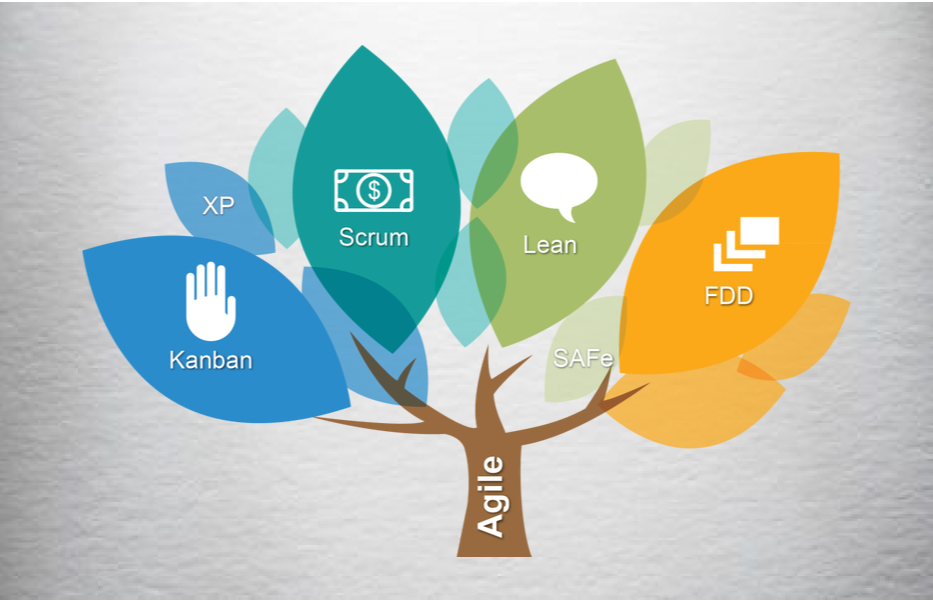Agile Methodologies
Agile is a flexible approach to software development that emphasizes collaboration, customer feedback, and small, rapid releases. Instead of delivering everything at once at the end, Agile teams deliver work in small, manageable pieces.
Types of Agile Methodologies -
There are several agile methodologies used around the world. The most popular ones are:
- Scrum
- Extreme Programming (XP)
- Kanban
- Lean
- Feature Driven Development (FDD)
- Crystal methodology
- Dynamic Software Development Method (DSDM)

Scrum
Scrum is one of the most widely used Agile methodologies. It structures work in fixed-length iterations called "sprints," typically lasting 2-4 weeks. At the beginning of each sprint, the team selects a set of tasks from a prioritized list called the "product backlog." Daily stand-up meetings help the team stay aligned, and at the end of each sprint, they review their work and plan for the next one.
Extreme Programming
Extreme Programming focuses on improving software quality and responsiveness to changing customer requirements. It emphasizes technical practices like test-driven development, pair programming, continuous integration, and frequent releases. XP encourages constant feedback from the customer and aims to deliver the most valuable features first.
Kanban
Kanban is a visual workflow management method that helps teams manage and improve their work processes. It uses a Kanban board with columns like "To Do," "In Progress," and "Done" to visualize work items. By limiting the number of tasks in progress, teams can identify bottlenecks and improve efficiency.
Core principles of Kanban -
- Principle 1 - Start with what you know.
- Principle 2 - Agree to pursue incremental, evolutionary changes.
- Principle 3 - Respect the current process, Roles and Responsibilities.
- Principle 4 - Encourage acts of Leadership at all levels.
Lean
Lean methodology focuses on delivering value to the customer by eliminating waste and optimizing processes. It emphasizes continuous improvement, respect for people, and efficient flow of work. Lean principles help teams deliver high-quality products quickly and efficiently
Below are the seven lean principles that apply to use lean software development in any IT project -
- Eliminating wastage
- Amplifying learning
- Making late decisions
- Quick delivery
- Empowered teams
- Built-in integrity
- Look at the whole picture
Feature Driven Development
FDD is a model-driven, short-iteration process that focuses on building and designing features. It involves five basic activities: developing an overall model, building a features list, planning by feature, designing by feature, and building by feature. FDD is particularly suitable for larger teams and projects with well-defined requirements.
Crystal Methodology
Crystal is a family of Agile methodologies that focuses on people, interactions, and community. It recognizes that each project may require a slightly different set of policies, practices, and processes. Crystal emphasizes frequent delivery, reflective improvement, and osmotic communication. Additionally, this methodology focuses on:
- Interaction
- People
- Community
- Skills
- Communications
- Talents
Dynamic Systems Development Method (DSDM)
DSDM is an Agile project delivery framework that emphasizes continuous user involvement and iterative development. It fixes cost, quality, and time at the outset and uses the MoSCoW prioritization technique (Must have, Should have, Could have, Won't have) to adjust the project deliverables. DSDM is particularly suited for projects with tight schedules and budgets.
